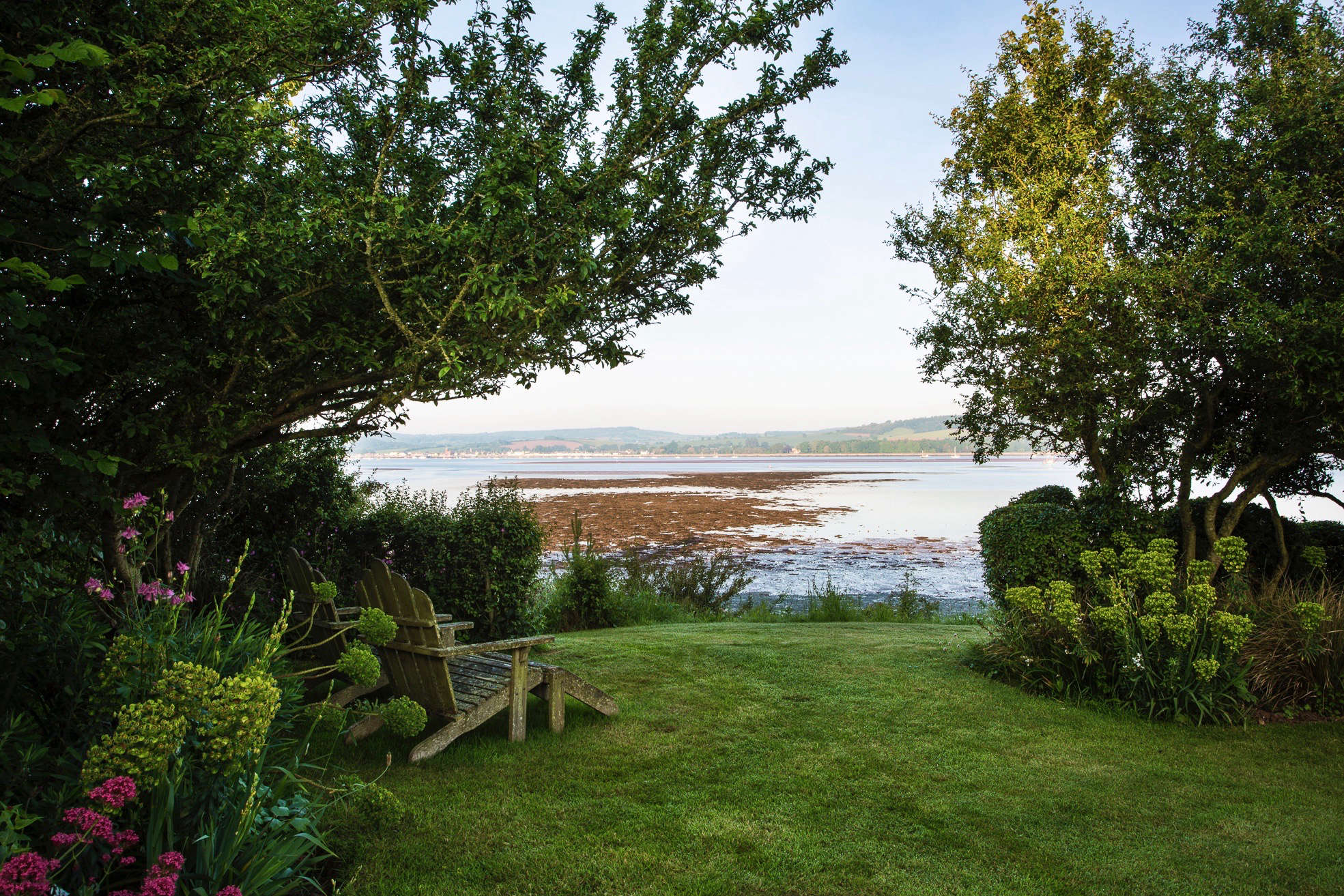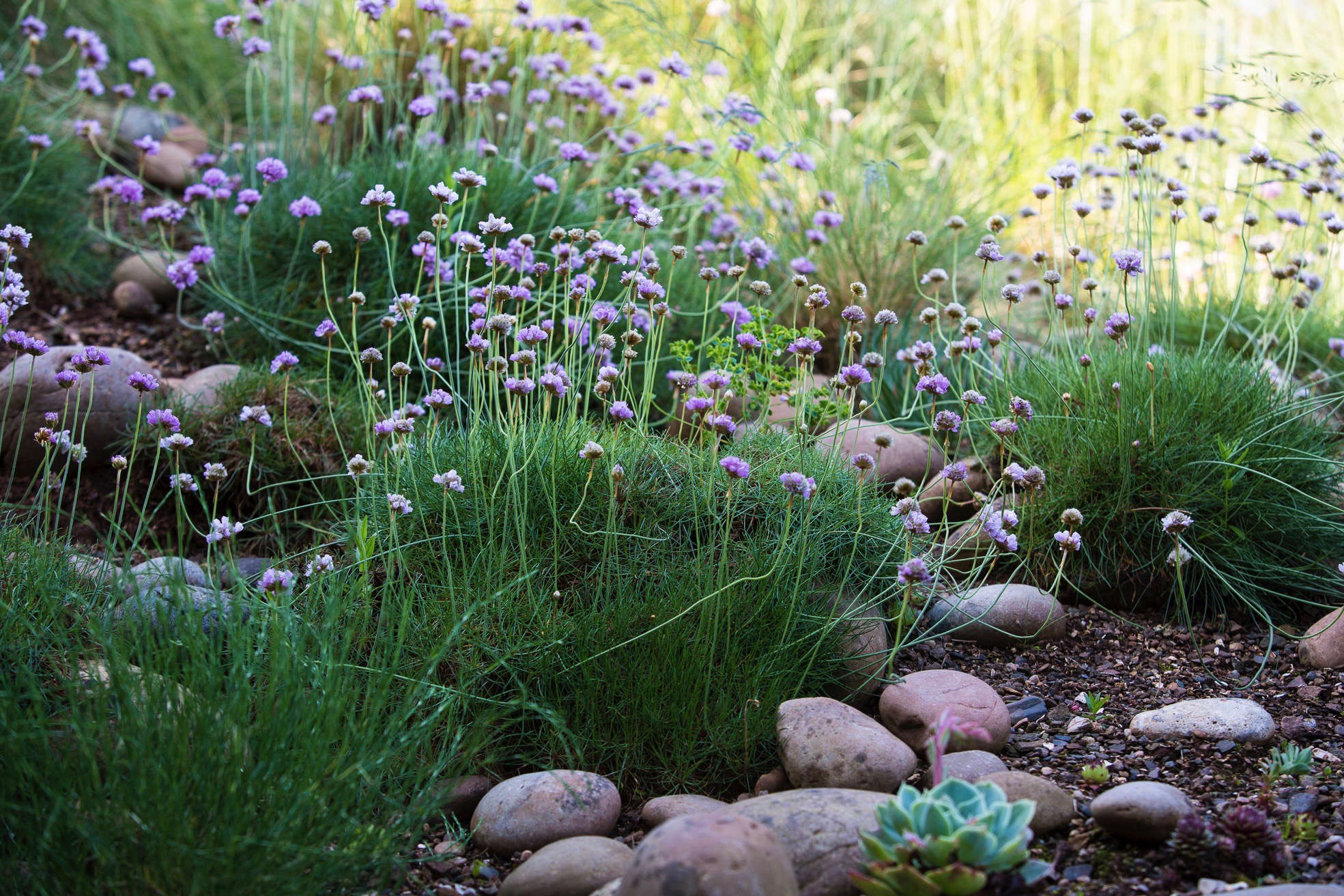Blocking out wind is not really an option in exposed areas; you cannot “build a wall.” Or rather you can, but the wind will jump right over it and land with extra force on the other side. Rushing air needs to be slowed, rather than stopped altogether.
Problem: My plants are exhausted from battling the elements.
Solution: Filter the wind with trees and shrubs and create a semi-sheltered garden.
Photography by Claire Takacs.
Above: Walls, whether living or manmade, have an extra disadvantage of blocking the view. Wind that has been staggered through a series of shrubs and trees allows for an enclosure like this one in Devon, on the southwest coast of England. It looks classic, but on closer inspection it’s tough. Plants include euphorbia, columbine (Aquilegia), verticals of Sisyrinchium striatum with its iris-like foliage, and in the foreground dark pink valerian (Centranthus ruber).
Above: Trees grow into interesting shapes when they have been blasted in their formative years, while grasses look even better when they are blowing around.
Many spring bulbs seem oblivious to wind and generally appear during the windy months anyway. Choose a small, stout daffodil like Narcissus ‘Jenny’, sporting petals that are “windswept” even on a still day. Crocus is oblivious to gusts, only needing sunshine to open up.
Above: Sheltering pines and birch trees provide a protective arc, within which taller plants like verbascum and fennel remain upright. Along with the oregano and rosemary growing here, they appreciate well-drained, poor soil; a slope is ideal.
Above: Magenta petals of Rosa rugosa break up this green collection of narrow-leafed plants, adapted for resisting the drying effects of wind. A beach with sand dunes and pine trees is a valuable lesson in windy gardening. Look closely at what grows there: very possibly smaller and tougher varieties of Eryngium or Artemisia, plants that are silvery, or felty, or needle-like.
Spines belong in wind; a single bent hawthorn tree is not an obviously elegant plant but it has drama. Wild rose species defy the notion that you can’t grow roses in wind; add spine to spine.
Above: Sea thrift (Armeria maritima) forms helpful mats of ground cover, aided here by stones and gravel. Ground cover is essential in exposed areas for retaining moisture and preventing soil erosion. Drought tolerant succulents like Sempervivum thrive in an informal setting like this.
Above: For more garden solutions, you can pre-order my new book, My Garden is a Car Park: and other Design Dilemmas, for £12.99 from Amazon UK. For US readers, The Problem with my Garden can be pre-ordered for $17.99 from Amazon.com.
See more installments of Can This Garden Be Saved:
- Can This Garden Be Saved: “I Have a Steep Slope”
- Can This Garden Be Saved: “There is Nothing to Look at in Winter”


















Have a Question or Comment About This Post?
Join the conversation (0)